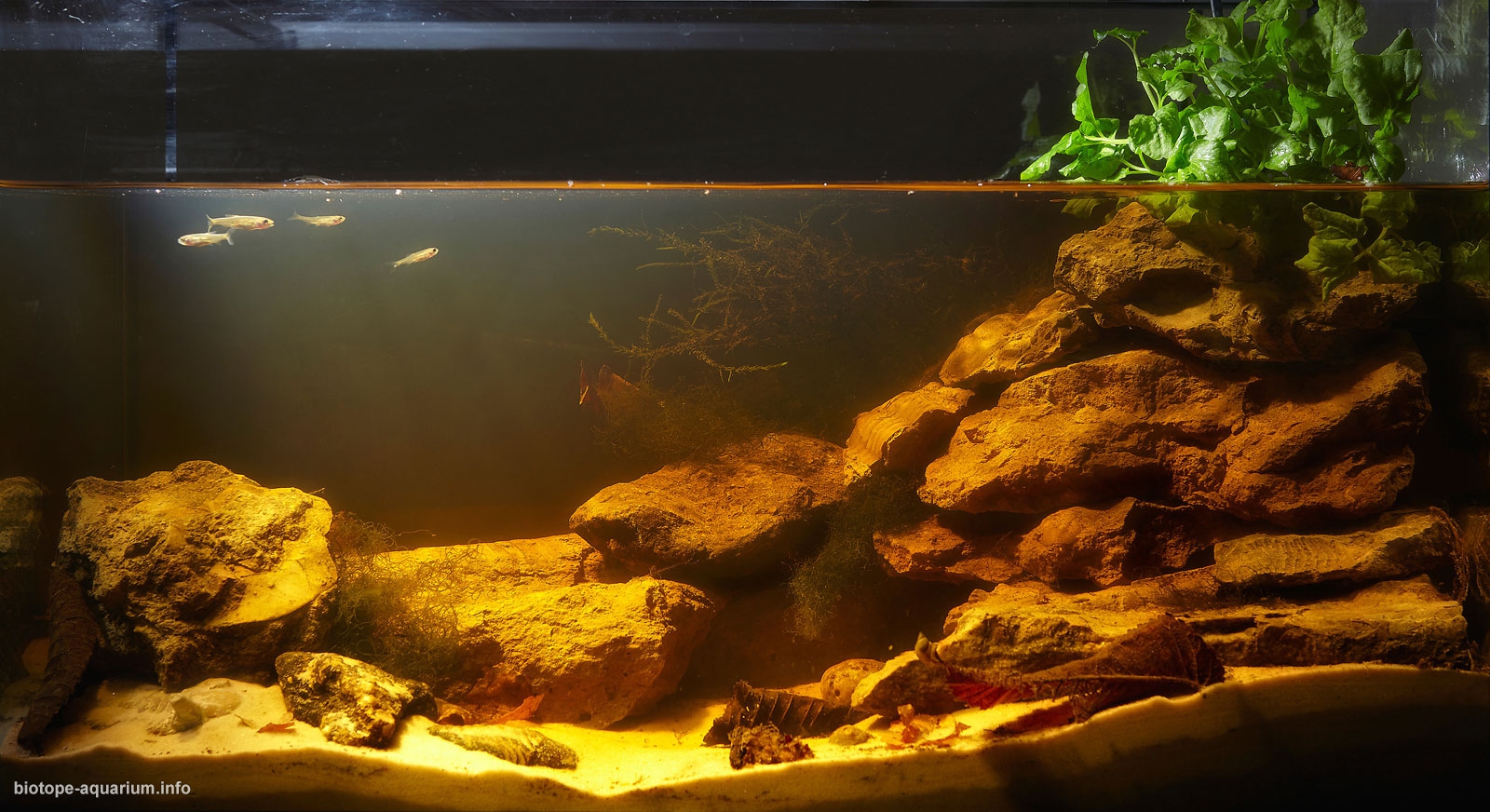Lava River in a canyon of the Leningrad region, Russia
The 27th place in the qualifying stage of the Biotope Aquarium Design Contest 2015
![]() Russia. Oleg Valersky
Russia. Oleg Valersky

Volume: 60 L
List of fishes: Squalius cephalus, Physa fontinalis, Heptagenia sp., Aquarius pallidum, Hydropsychidae g. sp., Gyrinus sp.
List of plants: Fontinalis antipyretica, Cardamine amara
Biotope description: Lava River has a length of its bed only 31 km and starts in the peat swamps to the south of the village Nazia. Due to this it has a brownish color of the water. In the upper and lower reaches Lava flows in a shallow valley. On a middle reach the river cuts in the limestone deep (30 m) and picturesque canyon. In the spring waters destroy calcareous layers, and boulders fall into the Lava. Therefore, the bottom of the river is covered with plates, stones, lime pebbles and sand. Limestone, forming the walls of the canyon, is rich in fossils of Ordovician period. It is the remains of many echinoderms, trilobites, bryozoans, brachiopods and cephalopods. Their age is 485-443 mln. years! Most fossils can be found right in the mainstream of the river, among the pebbles. During this part of the river the flow is relatively rapid, there are even small thresholds here. In the Lava there can be organisms requiring a high concentration of oxygen: Heptageniidae, Plecoptera, Hydropsychidae and others. The surface of the water is abundantly populated with water striders, whirligig beetles. And they both feed on insects fallen in water – in the canyon there is a lot of this kind of food. Here there are such fishes as chub, pike, belica and gudgeon. Actually there are few water plants in this part of the Lava River because of the rapid current. On the rocks there is a water moss Fontinalis antipyretica. Among the pebbles on the shore there is often Cardamine amara, it is not only very beautiful but also edible plant of Cruciferous. In the lower reaches the bottom of the river gradually becomes muddy. Naturally, aquatic organisms and vegetation changes here. A few kilometers to the north the Lava flows into Lake Ladoga. Lava is a river with a pronounced seasonality. In the spring, during the snowmelt, the river swells and rages, the flow is very fast and strong. In April and May the Lava is popular among canoeists. In summer, the water level gradually drops and by the end of summer the Lava looks more like a wide and rapid stream. Chub attracts fishing lovers to the river. The Lava River Canyon is not only geological sightseeing, but also one of the popular tourist destinations of the Leningrad region. Fossils in the background rocks: Asaphus spp., Megistaspidella sp., Endoceras sp.
